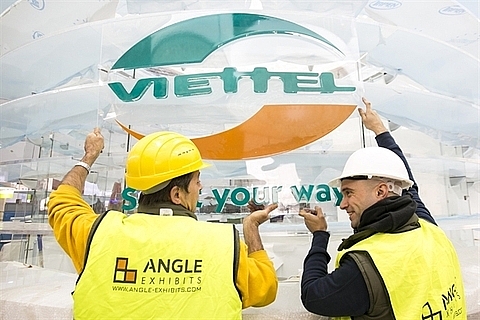SOEs need solutions to improve business efficiency
 |
| Viettel accounted for 60 per cent of the telecom industry revenue in 2018, with VND234 trillion (US$10.2 billion). - Photo dangcongsan.vn |
The SOEs should continue to play a role as an example in terms of productivity and efficiency and hold a dominant position in the domestic economy.
According to the Central Institute for Economic Management (CIEM), SOEs must be real enterprises. That means they must give priority to production and business efficiency, said Nguyen Dinh Cung, an economic expert and former CIEM Director.
There is still debate over whether State-owned enterprises should be considered instruments to regulate the domestic economy as well as stabilising the macro-economy.
This has caused difficulties for the restructuring and equitisation of SOEs, Cung said.
The efficiency of State capital investment is increasing, but it is still lower than the investment efficiency of other economic sectors. When analysing the profitability and labour efficiency ratios of the SOE sector, experts found that the sector had higher than average ratios but they did not accurately and fully reflect the efficiency of most SOEs because the sector's total profit depends on a few large SOEs operating in low-competition industries, such as mining, telecommunications and energy, Pham Duc Trung, head of CIEM’s Enterprise Innovation and Development Department told Dau tu (Investment) newspaper.
In comparison with highly competitive industries, like trade, construction and manufacturing, the performance of SOEs is lower than that of enterprises in other sectors. Many SOEs have not met requirements of financial security with high debt and they are likely to collapse when facing a poor business environment.
"Competitive pressure has revealed limitations in the business of SOEs," Trung said.
The SOEs can only compete when they are given autonomy to do business according to permitted business activities. But so far, the SOEs do not have complete autonomy, Cung said.
The Government has asked the Ministry of Planning and Investment to amend and supplement Decision 58/2016/QD-TTg on criteria for classification of State enterprises and State-invested enterprises and the list of State-owned enterprises under restructure in the 2016-20 period.
The goal of the amendment is to separate key economic sectors and public sectors from the sectors that should mobilise investment capital from society and determine a reasonable percentage of state ownership in enterprises to attract foreign investors and really change corporate governance.
The Government also requires separating production and supply of public products and services and products and services for social security from production and business activities for profit of enterprises.
According to the CIEM report, at present, the SOEs dominate in many sectors.
In the telecommunications industry, Viettel, VNPT, MobiFone have occupied large market shares, with rates of 51.5 per cent, 28.4 per cent and 12.7 per cent, respectively. Viettel accounted for 60 per cent of the telecom industry revenue in 2018, with VND234 trillion (US$10.2 billion).
In the banking sector, in 2018, State-owned commercial banks accounted for 44 per cent of total assets, 25 per cent of total charter capital, 48 per cent of the capital mobilisation market and 50 per cent of the lending market in the credit organisation system.
Meanwhile, power plants belonging to State-owned corporations such as EVN, PVN and TKV accounted for about 87 per cent of the electricity generation market.
In the mining industry, State-owned enterprises produced 97 per cent of clean coal and directly exploited all output of crude oil or joined with partners to refine all of them.
The SOE sector has more efficiency in operations when the efficiency of State capital investment at SOEs is gradually improved. The percentage of SOEs that suffered losses decreased to 15.4 per cent in 2017 from the average rate of 17.2 per cent in the period of 2011-15, Trung said.
But these figures have not convinced experts that the sector with strong development has contributed nearly 30 per cent to the national GDP growth, especially when comparing the SOE sector with businesses of other sectors.
What the stars mean:
★ Poor ★ ★ Promising ★★★ Good ★★★★ Very good ★★★★★ Exceptional
Related Contents
Latest News
More News
- Pivotal stage of growth paves way for rise in M&As (December 03, 2025 | 10:00)
- Positive projections for M&A interest from Thailand (December 03, 2025 | 09:40)
- Manifesting the first line of defence in cybersecurity (December 03, 2025 | 09:00)
- The transformational role AI can play in accounting arena (December 03, 2025 | 08:00)
- Unlocking 5G-AI potential in Singapore (December 03, 2025 | 08:00)
- Data-driven strategies vital for a fast-evolving nation (December 02, 2025 | 09:41)
- Policy to practice: how Vietnam can lead the region (November 26, 2025 | 16:03)
- Mobilising private capital at scale vital for climate battle (November 26, 2025 | 15:36)
- VILAF and Yoon & Yang launch Vietnam - Korea Practice Unit (November 26, 2025 | 15:16)
- Trademark disputes challenge foreign firms in Vietnam (November 24, 2025 | 15:30)

 Tag:
Tag:






















 Mobile Version
Mobile Version